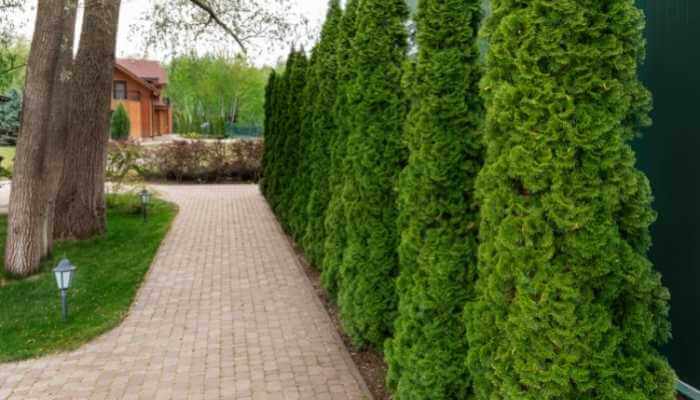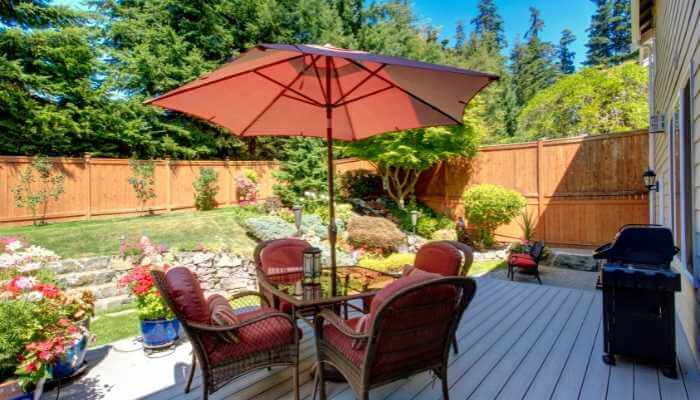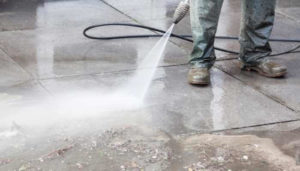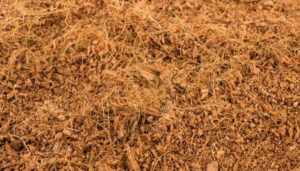It’s not just your outdoor living space that gets heated during the summer. Your entire home can go through a change that leads to higher energy bills and miserable conditions. One very efficient method of cooling both your patio and your home is simply by using landscaping.
Landscaping can make your outdoor living space more tolerable during the hottest parts of summer. You can reduce your home energy costs by up to 50%. How? You can use trees & shrubs to shade roofs & walls, use trellises to provide protection, and trim your foliage properly to allow breezes through.
This isn’t an immediate fix for the heat. It takes a while to grow plants the way you need them to grow in order to keep an area or a home cool. But, if you get started on these suggestions now, you could begin seeing results in the next year. Around your patio or backyard, you could begin seeing results this season!
Shading Your Yard with Trees and Shrubs
Windows capture radiant heat, dark roofing absorbs heat, and walls can capture heat through conduction. Therefore, houses absorb heat. It may be wise to consider planting fast-growing trees and tall shrubs that will block direct sunlight.
You should plan this out. Draw up a map using graph paper for the best planning results. Be sure to go outside and note the directionality of sunrises and sunsets. Observe how the wind flows around your house and make a note of it. Call 811 (in the U.S.) to make sure you know where to dig and plant appropriately. Maybe hire a landscape designer if you have the money and would prefer this.
Make sure that when you are ready to plant, you know what to plan and where you can best use landscaping to cool your home and patio. You want to enjoy cooler temperatures during the summer and then insulate these places during the winter. It’s best to choose trees that will allow a breeze but will shade the sun.
Choose trees with a broad, dense canopy, especially on the southern portion of your house or outdoor living space to block the intense sunlight. Just be sure you plant them far enough away that the root system does not become an issue. On the western side, you want to catch the diminishing, but still intense sunset. You should consider tall shrubs or shorter, more dense trees in that area.
If you want to block solar heat during the hotter months but let it in to help with heating during the winter – obviously you need deciduous trees for that. And use native species that will do best in the climate and soil that you are dealing with. After all, trees are expensive! But they are a natural investment in your property.
Trellis and Ground Shading for Your Outdoor Space
If you attach a trellis over your pergola, the plant you encourage to grow on it can help protect the area beneath from the sun. You can also lean a trellis against one side and get some relief. They do this a lot with grapevines in Europe.
You can also plant larger shrubs that provide shade to your outdoor living space or to the house. We did this with unattached trellises on the side of our first house. We planted large arborvitae (they were about seven feet tall when we got them) and spaced them appropriately for their growth. Adding staked trellises between them gave us a lovely design quirk. It helped keep everything supported and shaded a portion of the house. The jasmine that grew up in the trellises in our yard smelled great and helped shade.
You can do the same with your outdoor living space. I’ve seen gorgeous examples of this at our North Carolina Botanical Garden. They have grown wisteria over wooden structures to shade the pathway. They used both pergolas and trellises to get the vines to go where they wanted them to. This shades the area while allowing breezes to flow through.
Shrubs and ground cover can also help to cool the ground around your home. This lessens the radiant heat and cools the air around your home. Not to mention, it helps your air conditioner’s energy efficiency if you plant shade around the unit. A shaded air conditioner doesn’t have to work as hard to put out cool air. Just keep your filters and intakes free of obstructions and the landscaping can increase efficiency by 10%–15%.
Make Sure to Let the Cool Breeze Through
Always prune your lower branches to get any cool winds to blow beneath them and toward your outdoor living space–or your windows. Like I mentioned before, using trellised vines shades, but also allows a breeze to blow through. And that’s optimal.
In Conclusion
Though a lot of this article focuses on the house, this kind of plan can work well for your outdoor living space as well. Your backyard is just a small portion of your home. And you can plan out what you need to do in order to keep it cool in summer and insulated in the winter as well.
“Because cool air settles near the ground, air temperatures directly under trees can be as much as 25° cooler than temperatures near a blacktop.”
energy.gov
One thing I would caution—if you’re like me and want to grow a lot of vegetables, you shouldn’t shade your entire backyard. Also, if you already have or plan to use solar energy, never cover your southern areas. Usually, that’s where solar cells will be.
Shade your specific patio or outdoor space where you plan to entertain or enjoy yourself daily. And if you can be patient, get trees that take longer to grow. Why? Trees that take longer to grow are stronger, have deeper root systems, are less likely to have breakage in wind, and are also more drought resistant.
You might be lucky enough to have your outdoor living space already shaded by a tree. That’s great, but if not, you have plenty of options. If you don’t mind a less natural look, I’ve written an article about keeping your outdoor living space cool and I hope you’ll check those out as well. I plan to use several methods in my backyard. Always check with your local planting guides and local extension offices and coops for advice. They can direct you to the best local, non-invasive trees and shrubs for your needs.














